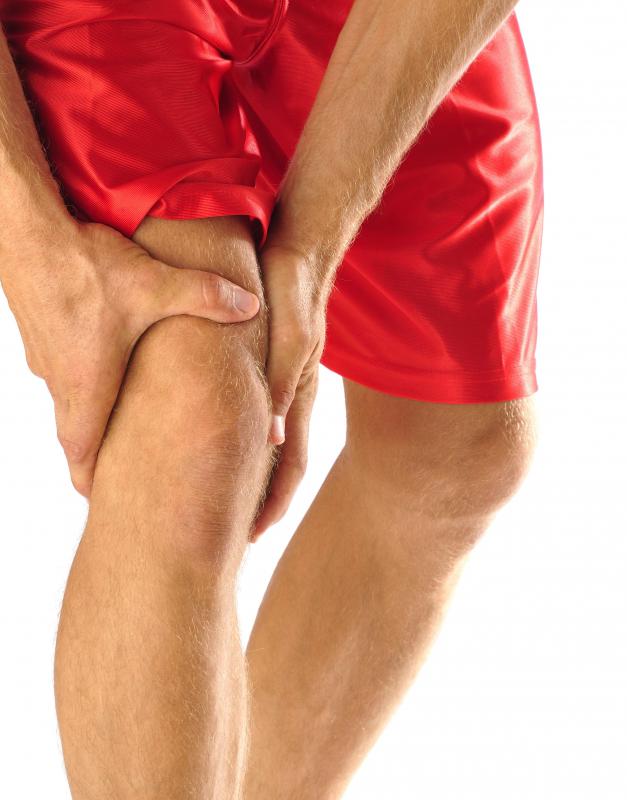At WiseGEEK, we're committed to delivering accurate, trustworthy information. Our expert-authored content is rigorously fact-checked and sourced from credible authorities. Discover how we uphold the highest standards in providing you with reliable knowledge.
What is the Knee Joint?
The knee joint is formed where the femur and tibia, commonly known as the thigh bone and the shin bone, meet. Another bone, known as the patella, or knee cap, sits at the front of the knee joint, where it slides over the femur as the knee bends and straightens. The surfaces of the bones which make up the knee joint are covered in a smooth substance called cartilage, which enables the different parts to glide over one another. Strong tissue bands known as ligaments connect the bones and help to keep the joint stable, and extra pieces of cartilage, called menisci, are positioned between the femur and the tibia to cushion the joint against impacts. Common conditions which can affect the knee joints include damage to cartilages or ligaments, and long-term problems such as arthritis.
Knee pain is a common occurrence and may be associated with symptoms such as weakness, swelling, redness and stiffness. Sometimes odd sounds such as pops or crunches may be associated with the pain, or the joint may become locked in a straightened position. In the case of certain knee joint problems, it is important to consult a doctor who will be able to carry out a knee examination.

Warning signs include having severe pain, being unable to put weight on the knee, experiencing fever or a large amount of swelling, and knee deformity or inability to move the joint. Minor knee problems can sometimes be treated at home by resting the knee, elevating the leg and applying ice to the joint. If the problem does not resolve after a few days, a medical consultation is normally required.

The menisci inside the knee joint may sometimes be injured. Meniscal cartilage may tear following a twisting movement of the knee, which takes place while weight is on the joint. This type of injury commonly occurs during activities such as skiing or football. In order to treat the condition, an articular cartilage repair may be carried out, using a type of keyhole surgery known as arthroscopy. Possible future methods of knee cartilage replacement therapy are currently being explored, where the cartilage is replaced using donor tissue, or a synthetic scaffold enables the body to create a new meniscus.

When there is a long-term history of pain in the knee, osteoarthritis is a possible cause. This kind of knee arthritis results from wear affecting the joint over a long period, causing cartilage to deteriorate. Eventually, in the most severe stage, the cartilage breaks down to expose the bone underneath. Depending on the extent of damage to the knee joint, surgery to carry out a partial knee replacement or a total knee replacement may become necessary.
AS FEATURED ON:
AS FEATURED ON:













Discuss this Article
Post your comments